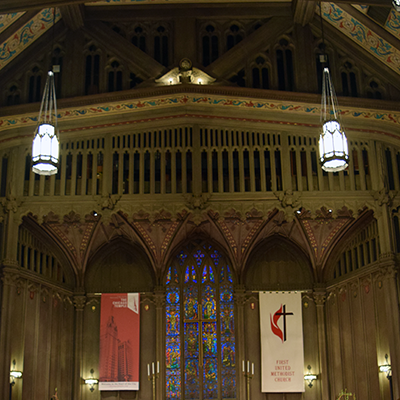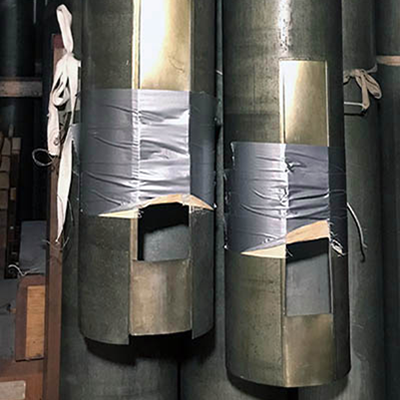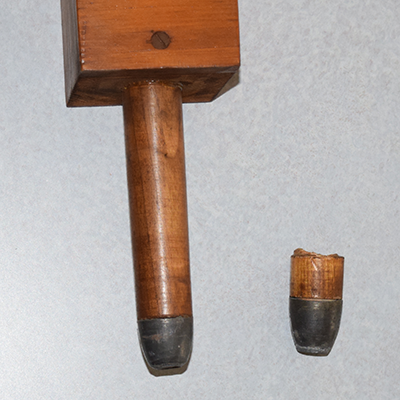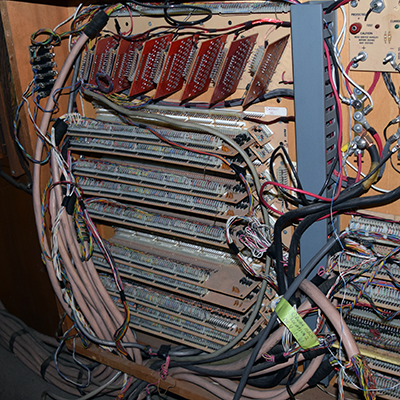
A Sanctuary of Sound
in the Heart of the City
Opus 414 Gallery

Opus 414 spans the width and height of the Chicago Temple's large sanctuary—concealed by the architectural grill above the altar.
The organ was installed as the Chicago Temple was built in 1924. Restoration will require partial removal of the grill in order to remove and then reinstall all of the components of Opus 414.


The console for Opus 414 consists of manuals (keyboards), pedals, and stop knobs. In perfect working order, these would allow the organist to activate any combination of the organ's 5, 589 pipes.
Due to damage caused by normal wear and tear, a series of water leaks, and some inconsistent upgrades, current players of Opus 414 cannot utilize all the resources of the organ.


Opus 414 has 5,589 pipes of varying size—the biggest are two full stories in height!
The specific tone of each pipe depends on qualities like height, width, and the material from which it is made.
When air is supplied to them, these pipes makes different sounds.
While playing, organists determine which pipes receive air and for how long.


In nearly a century of playing for church and community audiences, Opus 414 has suffered its share of wear and tear.
Three water leaks each caused serious damage and, with limited resources, problems have often required creative solutions.
As stop-gap fixes grow in number, it can be difficult to compensate for the impact they have on the organ.


This image shows a "toe" that has been snapped off of one of the organ's wooden pipes (an undamaged pipe is shown for comparison).
Damage like this not only makes the broken pipe unplayable, it also affects all the pipes in the same row (a "rank" of pipes).
Replacing one broken pipe can require that an entire rank of pipes be replaced.


While one company built the organ, several different vendors have worked on repairs and upgrades.
These vendors each used new tools, experimental processes, and complicated tweaks to make everything work together.
The resulting patchwork creates conflicts among different components that are expensive and time-consuming to track down and repair.


